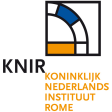Summary
- The Ostuni field survey is carried out in 1999 by the Archaeological Institutes of the Vrije Universiteit at Amsterdam (AIVU) and the Groningen University (GIA), and it is part of the “Salento Isthmus” project and the “Regional Pathways to Complexity, Landscape and Settlement Dynamics in Early Italy – RPC” project. Since there was a lack of data in this area of the Murge plateau – possibly reflecting a lack of intensive and problem-oriented research- the team decided to investigate two different landscape units (“Area 100” and “Area 200”) located in the territory of the modern town of Ostuni, in an attempt to reconstruct the ancient landscape, the settlement dynamics and the land exploitation strategies of past human communities. In these selected units, the survey method was specifically designed to document the low density and low visibility artefact scatters characteristic of low intensity land use. Instead, many sites dating to the middle Bronze age and settlements from the Hellenistic and Roman periods were discovered, suggesting an intense human exploitation in this area.
Project Dates
- 1999
Periods
- No period data has been added yet
- 2600 BC
- 1700 BC
- 500 AD
- The intensive and systematic Ostuni field survey, which focuses on the documentation of the density and distribution of artefacts, is carried out in two 1.5 sq. km sample areas located in the selected landscape units (i.e. “Area 100” and “Area 200”). Both areas are surveyed with a systematic approach in gridded units of 0.25 ha (50 by 50 m) at 10 m interval (resulting in a 20% coverage of the area) by teams of surveyors. Nearly 850 collection units, for a total area of 243 hectares, are surveyed during field activities and 36 sites are recorded. All surface material is collected and further analysis is employed in areas with find concentrations, which are identified as “sites”. In these sites additional samples are taken in order to quantify the density of archaeological material and collect diagnostic material for dating. The boundaries of survey units and sites are mapped on cadastral maps of Ostuni (1:10 k scale) and all data are stored in a geodatabase in GIS containing all the digitised field data. To gain understanding of the distribution and density of the collection units identified during the survey, density distribution maps are produced, and the normalized find density is corrected for biasing factors possibly causing differences in surface visibility and material recovery rates. Lastly, physical geographical mapping is carried out in parallel with the survey, with the aim of creating a soil suitability map useful for agricultural land evaluation from the late Bronze age until the Roman period.
Other Comments
- Research Directors: Gert-Jan Burgers (VU Amsterdam), Martijn van Leusen (University of Groningen) and Peter Attema (University of Groningen). Other team members: D. Yntema (AIVU) studied classical ceramics; B. Giaccio (Igag-CNR) studied lithic material; R. Feiken (GIA) and J. Fokkema (AIVU) digitised topographic maps. The physical geographical fieldwork conducted in parallel with the survey is reported in Foeken S., Gietema S. 2000 (Farming in the good old days: land suitability classification in Salento (Italy) for Bronze Age and Roman agriculture, unpublished). ................................................................................................................................ This record has been produced by the Fasti Online Survey team within the framework of the KNIR student internship 2020 'Digital Field Survey Archaeology'.
- The Ostuni ’99 survey aims to strengthen the basis for generalisations on the occupation of the Salento Murge and collect new data to construe the land use patterns and the settlement history of this area. The research - in line with the RPC main project aim of comparative regional analysis - efforts to unlock a long-term and supra-regional perspective on regional settlement and landscape dynamics.
- Netherlands Organization for Scientific Research (NWO); Museo delle civiltà preclassiche delle Murge at Ostuni;
- Archaeological Institutes of the Vrije Universiteit at Amsterdam (AIVU) and Groningen University (GIA);
Director
-
Director
- G.-j. L.m. Burgers
- Martijn Van Leusen
- Peter A.j. Attema




![Edit [ed]](/survey/skins/fastisur/images/plusminus/edit.png)
![View [view]](/survey/skins/fastisur/images/plusminus/view.png)